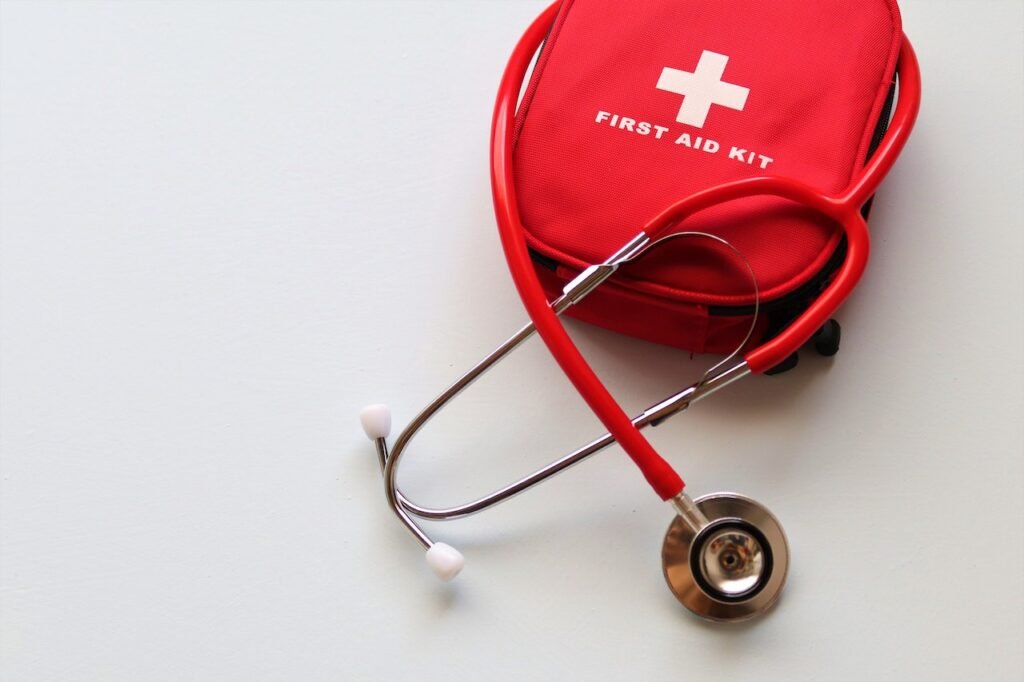How to treat frostbite?
Frostbite is a common skin injury that happens when you are exposed to cold weather for long periods or when you touch something very cold, like ice or frozen metal. It can cause part of your body to freeze, damaging your skin cells and underlying tissues. The underlying mechanism involves injury from the formation of ice crystals and blood clots in small blood vessels upon thawing. Let’s discuss what are the stages and treatment for frostbite.
Determine the stage of frostbite
Treatment involves the stage of frostbite you are suffering from. So recognition of its stage is the most important step before starting the treatment.
Frostnip
The early sign of frostbite is frostnip. It is recognized as pale or red skin due to the constriction of blood vessels and the formation of ice crystals on the skin’s surface. You may also feel pain, slight numbness, or prickling in the affected area, but the skin texture is normal. This condition is reversible upon rewarming.
Superficial frostbite
This condition is more serious than frostnip but reversible upon treatment with no tissue loss. It is recognized by numbness, grayish-yellow or white skin, and aching and slightly hardened or swollen skin. You may develop blisters with clear fluid within 24 hours after rewarming.
Deep Frostbite
It’s the most dangerous form of frostbite that extends into muscles and bones. It is recognized by pale and unusually firm skin and extreme numbness in the affected area. In some cases, blisters with blood appear on the skin. And in extreme cases, the skin becomes black and dead, which indicates gangrene and increases the risk of tissue loss.
Seek immediate treatment
Better is to get out of the cold and seek immediate help when you recognize your frostbite symptoms. If you are unable to seek medical help, start the treatment yourself.

First aid treatment
All three stages of frostbite have the same procedure of first aid treatments. Let’s have a look at them one by one.
Start with warming up the affected area.
It’s a good idea to rewarm the frostbitten area with body heat by placing the area in an armpit or warm hands.
Remove the wet clothes.
Removing your wet clothes is better to prevent further heat loss.
Avoid dry heating of the affected area.
Dry heat sources like fireplaces and heaters can cause burns. Since the frostbitten area is numb, you cannot monitor the dry heat temperature.
Avoid rubbing and massaging the affected area.
Rubbing and massaging the affected area can lead to further skin and tissue damage, like abrasion. It’s better to blot dry the area with a clean towel gently.
Avoid moving the affected area.
Try not to move the area at all. Avoid walking on affected toes or feet.
Take a painkiller
Before rewarming, taking anti-inflammatory drugs like ibuprofen is better to reduce swelling and pain in the affected area.
Submerging in warm water
Submerge the affected area in warm for 30 minutes for rewarming. Make sure you do not use hot water to treat the infected; otherwise, you may get burnt.
The period for Rewarming is important!
As the frozen area thaws on submerging in warm water, you feel severe pain. But it does not mean reducing submerging time. It’s essential to continue rewarding until the affected area is fully thawed.
For frostnip and superficial frostbite, 30 minutes are recommended for rewarding the affected area. While for severe frostbite, you may need to rewarm the area for up to an hour.
Watch out for changes after warming up!
Feeling a tingling or burning sensation along with pain is natural when your skin begins to reward itself. But if your skin does not change after rewarming for several minutes, it’s an alarming situation. There is something serious issue that your doctor needs to treat.
Diagnosis of frostbite
Your doctor will diagnose frostbite by looking at the area, asking how long you were out in the cold, and at what temperature range. During a physical exam, your provider will examine the skin color and blisters if you have any. Your healthcare provider may also take an X-ray or MRI scan to determine the extent of the injury.

Medical treatment of frostbite
The type of treatment you receive depends upon the severity of your frostbite.
Rewarming
your doctor will rewarm the area using a warm-water bath for 15 to 30 minutes. It’s essential to move the affected area as it rewarms. If you suffer from frostnip, you are ready to be released from the hospital after rewarming treatment. But if you have severe frostbite, your doctor will transfer you to the burn unit for treatment.
Oral painkiller medicines
The recovery process can be painful; your doctor will likely prescribe ibuprofen to help manage pain and inflammation.
Bandage the area
Your doctor may loosely wrap the area with a sterile bandage as it thaws after rewarming. This is done to separate the fingers or toes from each other to avoid abrasion.
Elevate the affected area
Your health provider may ask you to elevate the affected area to reduce swelling.
Antibiotic medication
The doctor will recommend antibiotic medication if you have infected blisters on the skin. You mustn’t pop or break blisters on the skin and take the full course of antibiotics exactly as prescribed.
Clot-busting drugs
In severe cases, you may receive an intravenous injection of a Clot-busting drug to restore blood flow to the infected area. This may lower the risk of amputation.
Hyperbaric oxygen therapy.
Hyperbaric oxygen therapy involves breathing pure oxygen in a pressurized room. Some patients show improved symptoms after this therapy.
Tetanus vaccination
Frostbite increases the risk of tetanus. If you haven’t been vaccinated or your last shot was more than ten years ago, your doctor may recommend that you be vaccinated.
Removal of damaged tissue
Frostbitten skin must be free of dead and damaged tissue to heal properly. That is why the doctor removes the dead tissues from the affected area but may wait 1 to 3 months to distinguish between healthy and dead cells.
Amputation
If you suffer from severe frostbite, your doctor may recommend amputation as a treatment option, but wait for 1-3 months after the initial exposure till the full extent of tissue damage is clear.
Can your pets get frostbite?
Your pets can also get frostbite. Make sure to keep them in a warm, cozy place when cold weathers are on its way. Otherwise, they may get frostbite. For more information, read howtothings.net articles on how to treat frostbite in dogs and how to treat frostbite in chickens.
Hypothermia
Hypothermia refers to lowering the core body temperature to dangerously low levels. Suppose a frostbite victim shows the signs of hypothermia like shivering, loss of concentration, or blurred speaking. It’s essential always to treat hypothermia before frostbite as it can be fatal to avoid hypothermia.
Takeaways
- You will probably also experience some pain and inflammation as you heal. But make sure to get plenty of rest and stay hydrated.
- Apply pure aloe vera cream to the affected areas to help prevent further skin damage and increase tissue healing.
- Do not pop or break blisters that appear until they break on their own.
- Avoid walking on your frostbite-affected feet or toes as you heal. It can cause further damage.
- Protect the affected area from further cold exposure for 6-12 months to prevent further damage.
